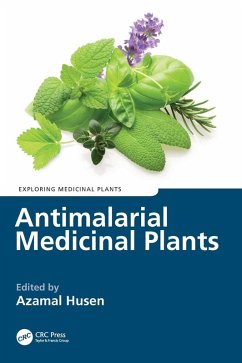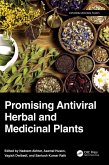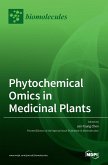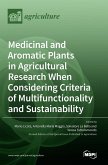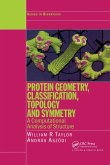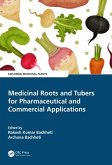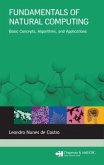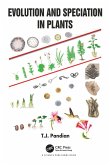Antimalarial Medicinal Plants
Herausgeber: Husen, Azamal
Antimalarial Medicinal Plants
Herausgeber: Husen, Azamal
- Gebundenes Buch
- Merkliste
- Auf die Merkliste
- Bewerten Bewerten
- Teilen
- Produkt teilen
- Produkterinnerung
- Produkterinnerung
Antimalarial Medicinal Plants provides information on bioactive compounds and therapeutic potentials of several antimalarial plant species found around the globe. The book evaluates these plant species with respect to their biology, diversity, distribution, and pharmacological values.
Andere Kunden interessierten sich auch für
![Promising Antiviral Herbal and Medicinal Plants Promising Antiviral Herbal and Medicinal Plants]() Promising Antiviral Herbal and Medicinal Plants259,99 €
Promising Antiviral Herbal and Medicinal Plants259,99 €![Phytochemical Omics in Medicinal Plants Phytochemical Omics in Medicinal Plants]() Phytochemical Omics in Medicinal Plants159,99 €
Phytochemical Omics in Medicinal Plants159,99 €![Medicinal and Aromatic Plants in Agricultural Research When Considering Criteria of Multifunctionality and Sustainability Medicinal and Aromatic Plants in Agricultural Research When Considering Criteria of Multifunctionality and Sustainability]() Medicinal and Aromatic Plants in Agricultural Research When Considering Criteria of Multifunctionality and Sustainability86,99 €
Medicinal and Aromatic Plants in Agricultural Research When Considering Criteria of Multifunctionality and Sustainability86,99 €![Protein Geometry, Classification, Topology and Symmetry Protein Geometry, Classification, Topology and Symmetry]() William R. TaylorProtein Geometry, Classification, Topology and Symmetry261,99 €
William R. TaylorProtein Geometry, Classification, Topology and Symmetry261,99 €![Medicinal Roots and Tubers for Pharmaceutical and Commercial Applications Medicinal Roots and Tubers for Pharmaceutical and Commercial Applications]() Medicinal Roots and Tubers for Pharmaceutical and Commercial Applications225,99 €
Medicinal Roots and Tubers for Pharmaceutical and Commercial Applications225,99 €![Fundamentals of Natural Computing Fundamentals of Natural Computing]() Leandro Nunes de CastroFundamentals of Natural Computing146,99 €
Leandro Nunes de CastroFundamentals of Natural Computing146,99 €![Evolution and Speciation in Plants Evolution and Speciation in Plants]() T. J. PandianEvolution and Speciation in Plants275,99 €
T. J. PandianEvolution and Speciation in Plants275,99 €-
-
-
Antimalarial Medicinal Plants provides information on bioactive compounds and therapeutic potentials of several antimalarial plant species found around the globe. The book evaluates these plant species with respect to their biology, diversity, distribution, and pharmacological values.
Hinweis: Dieser Artikel kann nur an eine deutsche Lieferadresse ausgeliefert werden.
Hinweis: Dieser Artikel kann nur an eine deutsche Lieferadresse ausgeliefert werden.
Produktdetails
- Produktdetails
- Verlag: CRC Press
- Seitenzahl: 330
- Erscheinungstermin: 22. April 2024
- Englisch
- Abmessung: 260mm x 183mm x 22mm
- Gewicht: 817g
- ISBN-13: 9781032457154
- ISBN-10: 1032457155
- Artikelnr.: 70117032
- Herstellerkennzeichnung
- Libri GmbH
- Europaallee 1
- 36244 Bad Hersfeld
- gpsr@libri.de
- Verlag: CRC Press
- Seitenzahl: 330
- Erscheinungstermin: 22. April 2024
- Englisch
- Abmessung: 260mm x 183mm x 22mm
- Gewicht: 817g
- ISBN-13: 9781032457154
- ISBN-10: 1032457155
- Artikelnr.: 70117032
- Herstellerkennzeichnung
- Libri GmbH
- Europaallee 1
- 36244 Bad Hersfeld
- gpsr@libri.de
Azamal Husen served as Professor and Head of the Department of Biology, University of Gondar, Ethiopia and is a Foreign Delegate at Wolaita Sodo University, Wolaita, Ethiopia. Previously, he was a Visiting Faculty of the Forest Research Institute, and the Doon College of Agriculture and Forest at Dehra Dun, India. Husen's research and teaching experience of 20 years encompasses the biogenic nanomaterial fabrication and application, plant responses to nanomaterials, plant adaptation to harsh environments at the physiological, biochemical, and molecular levels, herbal medicine, and clonal propagation for improvement of tree species. He has conducted several research projects sponsored by various funding agencies, including the World Bank (FREEP), the National Agricultural Technology Project (NATP), the Indian Council of Agriculture Research (ICAR), the Indian Council of Forest Research Education (ICFRE); and the Japan Bank for International Cooperation (JBIC). He received four fellowships from India and a recognition award from the University of Gondar, Ethiopia, for excellent teaching, research, and community service. Husen has been on the Editorial board and the panel of reviewers of several reputed journals published by Elsevier, Frontiers Media, Taylor & Francis, Springer Nature, RSC, Oxford University Press, Sciendo, The Royal Society, CSIRO, PLOS, MDPI, John Wiley & Sons and UPM Journals. He is on the advisory board of Cambridge Scholars Publishing, UK. He is a Fellow of the Plantae group of the American Society of Plant Biologists, and a Member of the International Society of Root Research, Asian Council of Science Editors, and INPST. To his credit are over 200 publications; and he is Editor-in-Chief of the American Journal of Plant Physiology. He is also working as Series Editor of 'Exploring Medicinal Plants', published by Taylor & Francis Group, USA; 'Plant Biology, Sustainability, and Climate Change', published by Elsevier, USA; and 'Smart Nanomaterials Technology', published by Springer Nature Singapore Pte Ltd. Singapore.
1. Diversity and geographic distribution of some antimalarial plants
species
2. Biology and genetic improvement of antimalarial plant species
3. Plant Tissue Culture Practices for Antimalarial Agents
4. Sustainable techniques for the harvest and conservation of antimalarial
plant species
5. Toxic compounds associated with some antimalarial plant species
6. Plant-based secondary compounds and nutrients as therapeutic agents in
the management of malaria infection
7. Antioxidants from Antimalarial Plants and their Applications
8. Traditional claims and scientific validations of the antimalarial plant
species
9. Antimalarial responses, traditional and other potential uses of
Aristolochia genera
10. Antimalarial response, traditional and other potential uses of
Aspidosperma genera
11 Antimalarial response, traditional and other potential uses of Cinchona
genera
12. Antimalarial response, traditional and other potential uses of Croton
genera
13. Antimalarial response, traditional and other potential uses of
Cryptolepis genera
14. Antimalarial response, traditional, and other potential uses of
Momordica genera
15. Antimalarial response, traditional and other potential uses of Piper
genera
16. Antimalarial response, traditional and other potential uses of the
genus Senna
17. Antimalarial response, traditional and other potential uses of Solanum
genus
18. Antimalarial response, traditional and other potential uses of
Stachytarpheta genera
19. Antimalarial response, traditional and other potential uses of Tabebuia
genera
20. Antimalarial response, traditional and other potential uses of Swertia
genus
species
2. Biology and genetic improvement of antimalarial plant species
3. Plant Tissue Culture Practices for Antimalarial Agents
4. Sustainable techniques for the harvest and conservation of antimalarial
plant species
5. Toxic compounds associated with some antimalarial plant species
6. Plant-based secondary compounds and nutrients as therapeutic agents in
the management of malaria infection
7. Antioxidants from Antimalarial Plants and their Applications
8. Traditional claims and scientific validations of the antimalarial plant
species
9. Antimalarial responses, traditional and other potential uses of
Aristolochia genera
10. Antimalarial response, traditional and other potential uses of
Aspidosperma genera
11 Antimalarial response, traditional and other potential uses of Cinchona
genera
12. Antimalarial response, traditional and other potential uses of Croton
genera
13. Antimalarial response, traditional and other potential uses of
Cryptolepis genera
14. Antimalarial response, traditional, and other potential uses of
Momordica genera
15. Antimalarial response, traditional and other potential uses of Piper
genera
16. Antimalarial response, traditional and other potential uses of the
genus Senna
17. Antimalarial response, traditional and other potential uses of Solanum
genus
18. Antimalarial response, traditional and other potential uses of
Stachytarpheta genera
19. Antimalarial response, traditional and other potential uses of Tabebuia
genera
20. Antimalarial response, traditional and other potential uses of Swertia
genus
1. Diversity and geographic distribution of some antimalarial plants
species
2. Biology and genetic improvement of antimalarial plant species
3. Plant Tissue Culture Practices for Antimalarial Agents
4. Sustainable techniques for the harvest and conservation of antimalarial
plant species
5. Toxic compounds associated with some antimalarial plant species
6. Plant-based secondary compounds and nutrients as therapeutic agents in
the management of malaria infection
7. Antioxidants from Antimalarial Plants and their Applications
8. Traditional claims and scientific validations of the antimalarial plant
species
9. Antimalarial responses, traditional and other potential uses of
Aristolochia genera
10. Antimalarial response, traditional and other potential uses of
Aspidosperma genera
11 Antimalarial response, traditional and other potential uses of Cinchona
genera
12. Antimalarial response, traditional and other potential uses of Croton
genera
13. Antimalarial response, traditional and other potential uses of
Cryptolepis genera
14. Antimalarial response, traditional, and other potential uses of
Momordica genera
15. Antimalarial response, traditional and other potential uses of Piper
genera
16. Antimalarial response, traditional and other potential uses of the
genus Senna
17. Antimalarial response, traditional and other potential uses of Solanum
genus
18. Antimalarial response, traditional and other potential uses of
Stachytarpheta genera
19. Antimalarial response, traditional and other potential uses of Tabebuia
genera
20. Antimalarial response, traditional and other potential uses of Swertia
genus
species
2. Biology and genetic improvement of antimalarial plant species
3. Plant Tissue Culture Practices for Antimalarial Agents
4. Sustainable techniques for the harvest and conservation of antimalarial
plant species
5. Toxic compounds associated with some antimalarial plant species
6. Plant-based secondary compounds and nutrients as therapeutic agents in
the management of malaria infection
7. Antioxidants from Antimalarial Plants and their Applications
8. Traditional claims and scientific validations of the antimalarial plant
species
9. Antimalarial responses, traditional and other potential uses of
Aristolochia genera
10. Antimalarial response, traditional and other potential uses of
Aspidosperma genera
11 Antimalarial response, traditional and other potential uses of Cinchona
genera
12. Antimalarial response, traditional and other potential uses of Croton
genera
13. Antimalarial response, traditional and other potential uses of
Cryptolepis genera
14. Antimalarial response, traditional, and other potential uses of
Momordica genera
15. Antimalarial response, traditional and other potential uses of Piper
genera
16. Antimalarial response, traditional and other potential uses of the
genus Senna
17. Antimalarial response, traditional and other potential uses of Solanum
genus
18. Antimalarial response, traditional and other potential uses of
Stachytarpheta genera
19. Antimalarial response, traditional and other potential uses of Tabebuia
genera
20. Antimalarial response, traditional and other potential uses of Swertia
genus

